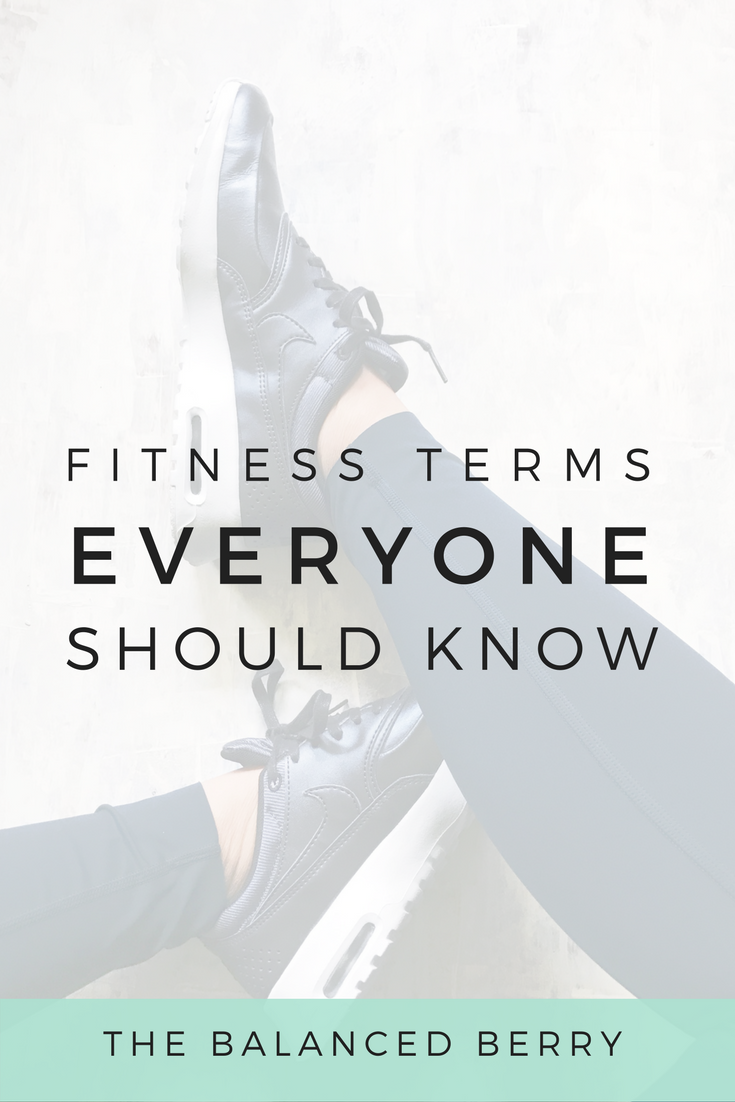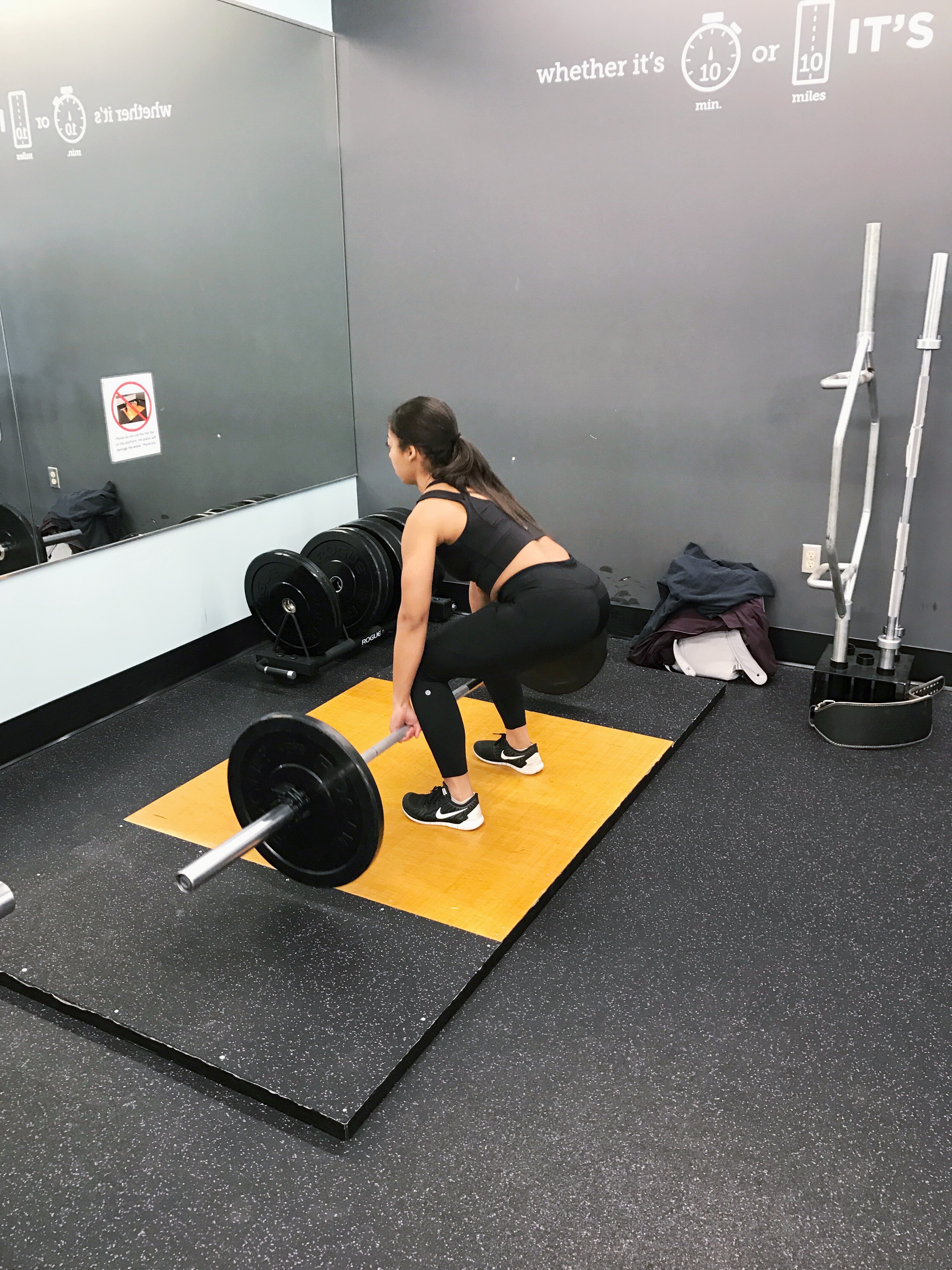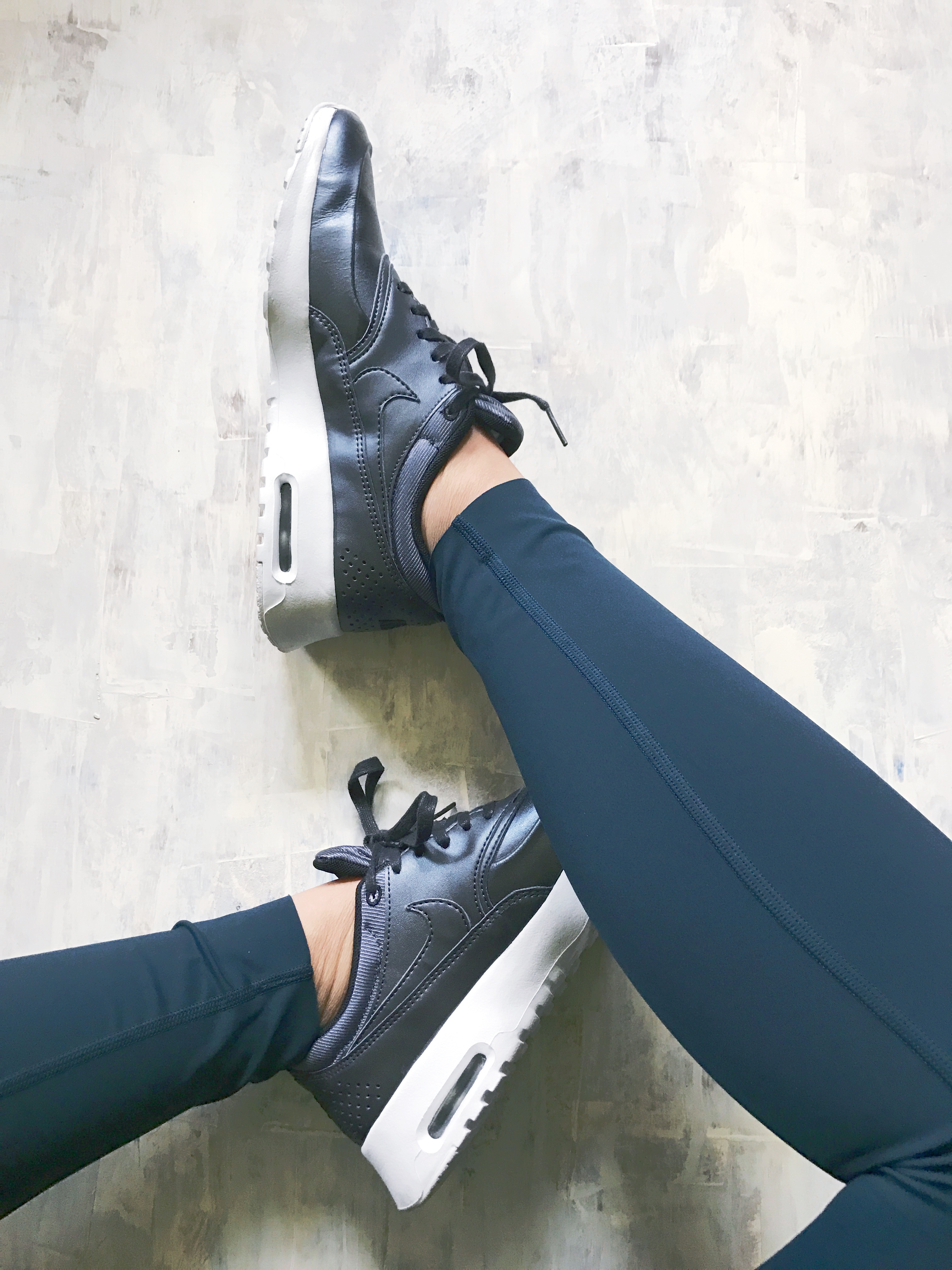
Easy-to-understand definitions for 20 fitness terms everyone needs to know.

Do you ever see fitness content online and feel like you’re reading an entirely different language? There are a ton of terms, acronyms, and phrases that are important to understand if you’re following any type of workout plan, yet aren’t necessarily intuitive to understand.
Today I’m breaking down the ABC’s of working out and defining key terms that will be helpful for you to understand while you’re working on your fitness.
Aerobic
Aerobic means “requiring oxygen.” Aerobic exercise usually refers to cardiovascular exercise or movements that help your cardiorespiratory system run efficiently. Common examples of aerobic exercise include running, biking, swimming, or any form of steady-state cardio.
AMRAP
AMRAP is an acronym that stands for “as many rounds as possible” or “as many repetitions as possible” depending on the instructions during the workout. Generally, during an AMRAP workout, you will be instructed to perform certain exercises as many times as you can with good form within a specific period of time.
For example, if your workout consisted of a 10-minute AMRAP of 10 burpees, 10 push-ups, and 10 squats, you would complete those three exercises one after another as many times as you can in 10 minutes.
Anaerobic
The term anaerobic refers to activities that do not require oxygen. High-intensity exercises that are performed for a short duration of time such as sprinting and heavy strength training are considered anaerobic. Anaerobic exercises are beneficial for building strength and power.
Circuit
A circuit consists of a series of exercises that are performed one after another with little to no rest in between.
Compound Exercise
Compound exercises are movements that work multiple muscle groups in one repetition. An example of a compound exercise would be the thruster (link to thruster), which combines the strength benefits of a squat and shoulder press, effectively working the glutes and shoulders.
DOMS
DOMS stands for “delayed onset muscle soreness.” If you have ever experienced soreness 24 to 48 hours after completing a workout, you have experienced DOMS.
Drop Set
A drop set is a training method that begins with a strength exercise performed with heavy weight. When you become fatigued, you reduce (or “drop”) the weight and continue performing the exercise. Drop sets can be a beneficial way to build strength and endurance.
Dynamic Stretch
Dynamic stretches require active extension to move a joint through its available range of motion. Dynamic stretches are perfect for warming up your body before your workout.
EMOM
EMOM stands for “every minute on the minute.” During an EMOM-style workout, perform a specific exercise or set of exercises at the top of every minute indicated. When you complete the exercise(s), use the remaining time to rest until the next minute starts.
For example, if you are instructed to perform 10 burpees EMOM for five minutes, and it took you 15 seconds to complete the burpees, the remaining 45 seconds would be your rest period before you do your next set of burpees.
EPOC
EPOC stands for “excess postexercise oxygen consumption.” Essentially, it is a period of time where your body’s metabolism is elevated after your workout. If you have ever finished a workout, showered, and are still a little sweaty or flushed, you have likely experienced EPOC. It typically occurs after performing high-intensity exercise.
Foam Rolling
Foam rolling is the most common form of self-myofascial release which can help release knots within your muscles, improve flexibility, and help correct muscle imbalances.
Functional Training
Functional training refers to training methods that help build strength and endurance to support everyday movement and activity. Functional training often includes compound exercises that work more than one muscle group at a time (as this is how our body moves day to day), an emphasis on total core strength, and high-intensity cardiovascular conditioning.
CrossFit is a popular form of functional training. A few common functional exercises include kettlebell swings, pull-ups, squats, and deadlifts.

HIIT
HIIT stands for “high-intensity interval training,” and consists of short bursts of high-intensity exercise, followed by a brief recovery period. If you would like to learn more about HIIT and how to use HIIT effectively in your workout routine, check out this guest post I shared on Hello to Fit.
Isometric Exercise
Isometric exercises are a form of strength training where the muscle is being challenged by holding a specific position, as opposed to flexing or extending. The muscle being worked is exerting force that is equal to the force being placed on it. A few examples of common isometric exercises include planks and wall sits.
LISS
LISS stands for “low-intensity steady state” and refers to moderate cardio exercise that is performed without varying intensity.
Plyometric Exercise
Plyometrics are exercises that are explosive in nature and generate quick, powerful movements. Examples of plyometric exercises include squat jumps, burpees, plank jacks, and box jumps.
Repetitions or Reps
A repetition (commonly referred to as a “rep”) is a complete movement of a single exercise. When you are given a number of reps to complete, that indicates the number of times you are to complete the exercise.
Static Stretch
When performing a static stretch, you passively stretch your muscle to the point of tension and hold for a specific period of time (usually 30 seconds or more). Static stretches are best done as a cool down after your warm up, or on your rest days. Avoid performing static stretches before strength training workouts, as research suggests doing so could result in injury.
Straight Set
A straight set consists of a group of consecutive repetitions. For example, if you were instructed to perform three straight sets of 15 push-ups, 15 sit-ups, and 15 lunges, you would perform each exercise for the indicated number of reps, followed by a period of rest repeated three times through.
Superset
A set of two exercises that are performed back to back, with little to no rest in between. For example, if you are instructed to complete a superset of 10 squats and 10 squat jumps, after completing your squats you would immediately begin performing squat jumps without taking time to rest in between. After completing both exercises, then you would have a period of rest.

And there you have it! Twenty key terms that will help make decoding your workout plan a little easier. I hope this was helpful for you. If you come across any other wonky workout terms you don’t understand, let me know in the comments below, or on Instagram (@balancedberry) and I would be happy to decipher them for you.

So many important terms here, Les. I feel like there are so many acronyms sometimes that it’s great to have a a list like this!
Thanks Jen! I realized I took a lot of the knowledge I had for granted and that not everyone knows what these mean. I hope it’s helpful for folks 🙂